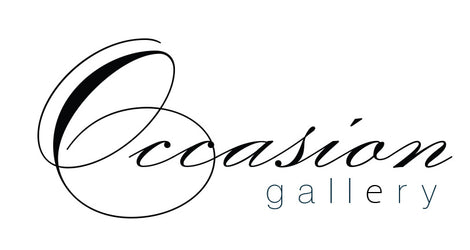
How to Tell If Precious Metals Are Truly Gold, Silver, or Other Metals
Determining whether a piece of jewelry or a charm is made of genuine gold, silver, or another precious metal is crucial for ensuring its value and authenticity. With so many plated or imitation products on the market, knowing how to verify the metal’s authenticity can save you from purchasing something that's not what it seems. Here’s a guide to help you distinguish between genuine precious metals and imposters.
1. Check for Hallmarks and Stamps
Genuine precious metals typically feature hallmarks or stamps that indicate the metal’s purity and origin:
- Gold: Look for stamps like “10K,” “14K,” “18K,” or “24K,” indicating the karatage of the gold. European markings might show “375” (9K), “585” (14K), or “750” (18K), indicating the gold’s purity in parts per thousand.
- Silver: Sterling silver is marked with “925,” indicating 92.5% silver content. You may also see markings like “800” or “835” for lower silver purities.
- Platinum: Stamps like “PT,” “PLAT,” or “950” (95% pure platinum) are common on platinum items.
No hallmark doesn’t necessarily mean the piece is fake, but it should raise some caution.
2. Perform a Magnet Test
Gold, silver, and platinum are non-magnetic, so they won’t be attracted to a magnet. If your piece is drawn to a magnet, it’s likely made of a less valuable metal or has a core made of base metal. However, be aware that some counterfeit metals are non-magnetic too, so this test alone isn’t definitive.
3. Acid Test for Metal Purity
An acid test is a common method for verifying precious metals. For gold, different acid solutions are used depending on the karat (10K, 14K, etc.). When applied to a small scratch on the item, the reaction will reveal whether the metal is genuine. Silver and platinum have their own specific acid tests. While effective, it’s best to have this test performed by a jeweler, as improper handling can damage your piece.
4. Use a Jewelry Scale for Density
Gold, silver, and platinum have specific densities that differ from less valuable metals. Weighing your item and comparing it to the standard density for the type of metal can help confirm its authenticity. For example, 24K gold is denser than 14K gold due to its higher purity. If the weight feels off for the size of the item, it could be an indication of a fake.
5. Conduct a Nitric Acid Test
A more advanced test, nitric acid testing, can reveal if a metal is real or plated. When applied to a small area of the item, real gold remains unaffected, while non-gold metals may turn green. Sterling silver also reacts to nitric acid; genuine silver turns a milky color, while fakes may turn green or black.
6. Examine the Color and Tarnish
Gold’s color varies with purity—24K gold is a deep yellow, while lower karats like 10K and 14K have paler tones due to alloying with other metals. Silver, while prone to tarnishing, should clean up to a brilliant shine. If your item tarnishes too easily or its color seems inconsistent, it might be plated or made from a different metal.
7. Look for Signs of Plating
Gold-plated and silver-plated items will often show wear at the edges or clasp, revealing a different metal underneath. Use a magnifying glass to check for any discoloration or peeling that suggests a base metal is beneath the surface.
8. Seek Professional Verification
For high-value pieces or complete certainty, it’s best to consult a professional jeweler or appraiser who has access to more precise testing methods like X-ray fluorescence (XRF) analysis. This non-destructive method can accurately determine the metal’s composition.
Conclusion
Determining whether a piece is made of real gold, silver, or platinum involves a combination of visual inspection, physical tests, and expert verification. Hallmarks and stamps are a good starting point, but additional tests like magnetism, acid testing, and density measurement can provide more reliable confirmation. Whether you’re buying a new charm or inheriting a piece of family jewelry, these methods will help ensure you’re getting the genuine article.
